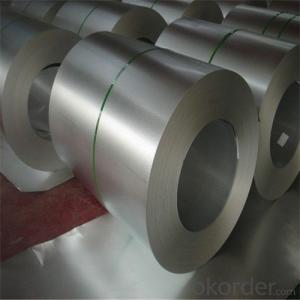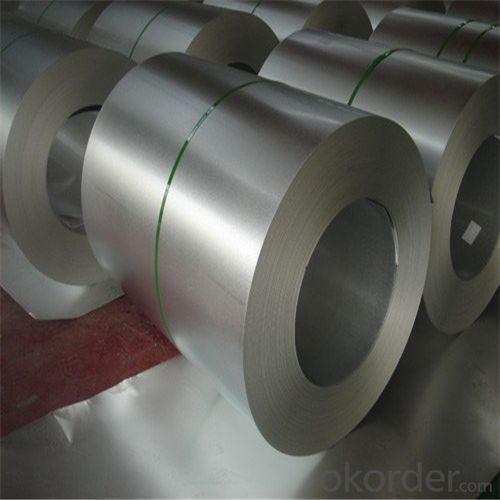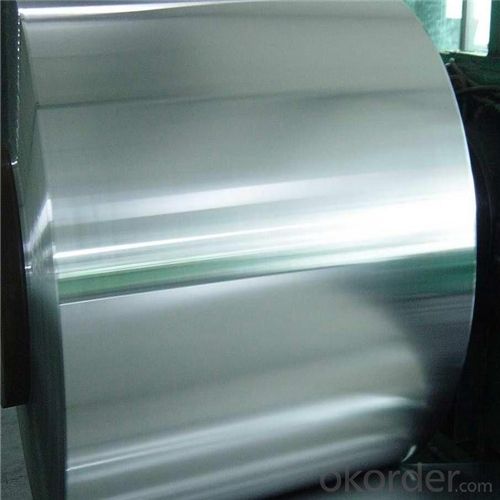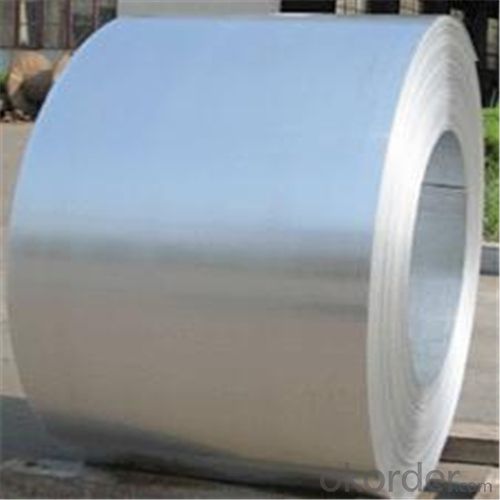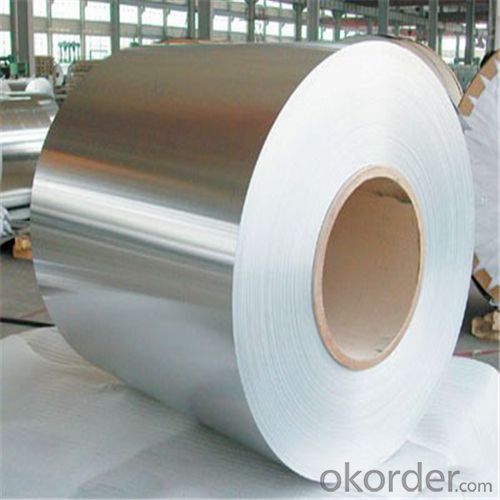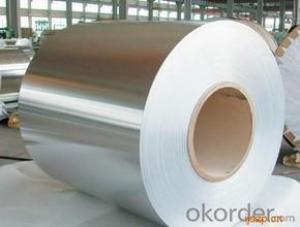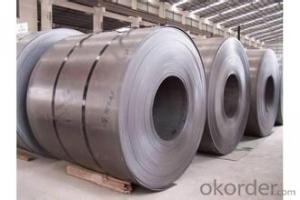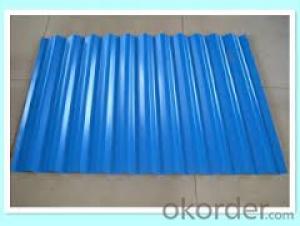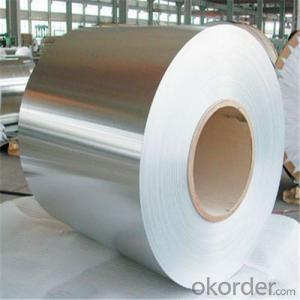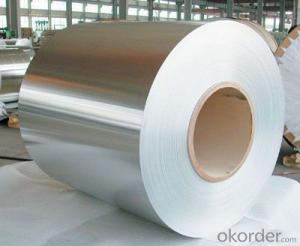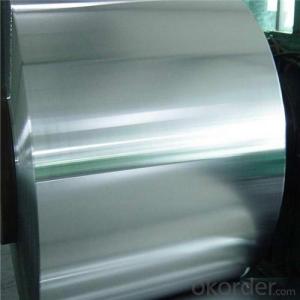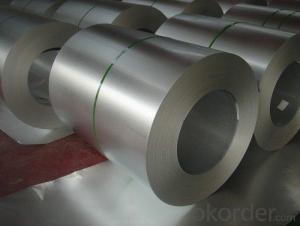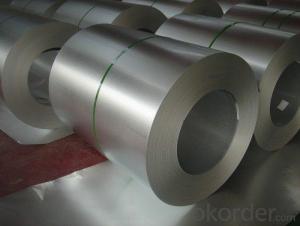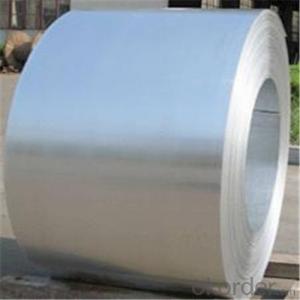Hot-Dip Aluzinc Steel Coil Used for Industry
- Loading Port:
- Tianjin
- Payment Terms:
- TT OR LC
- Min Order Qty:
- 25 m.t.
- Supply Capability:
- 50000 m.t./month
OKorder Service Pledge
OKorder Financial Service
You Might Also Like
Hot-Dip Aluzinc Steel Coil Used for Industry
1.Structure of Hot-Dip Aluzinc Steel Coil Description
Hot-dip aluzinc steel sheet is substrated on cold rolled steel in various strength and specification. Coating composition is 55% aluminmum in weight ratio, 43.4% zinc, and 1.5% silicon, with excellent and heat resistance performance.
2.Main Features of the Hot-Dip Aluzinc Steel Coil
•High Purity
•Easy control and operation
•High strength
•Fast melting
•Competitive price
•Best Service
3. Hot-Dip Aluzinc Steel Coil Images
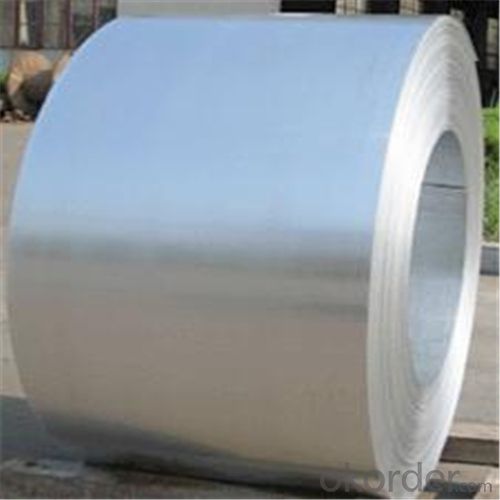
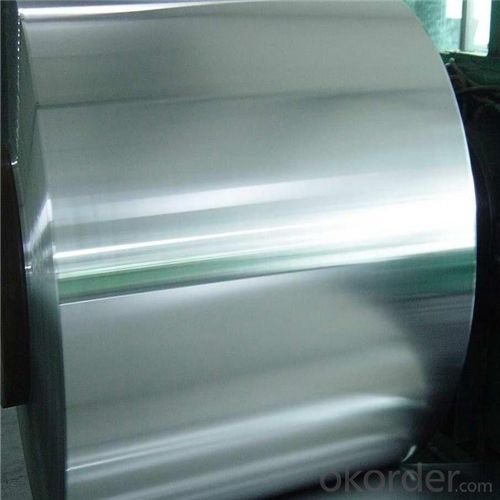
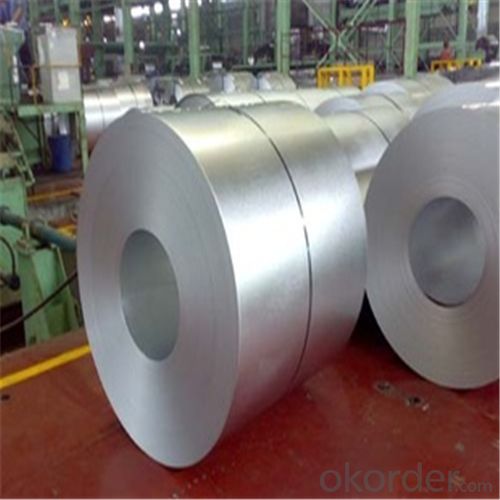
4. Hot-Dip Aluzinc Steel Coil Specification
Hot-Dip Aluzinc Steel Coil | |
Thicknenss | 0.16mm-3.5mm |
Width | 1250mm max |
Coating mass | 30-185g/㎡ |
Spangle | Regular/Minimized/Zero Spangle |
Coil inner diameter | 508-610mm |
Surface treatment | Chromated/non chromated, Oiled/non oiled, Anti finger print |
5.FAQ of Hot-Dip Aluzinc Steel Coil
We have organized several common questions for our clients,may help you sincerely:
①How about your company?
A world class manufacturer & supplier of castings forging in carbon steel and alloy steel,is one of the large-scale professional investment casting production bases in China,consisting of both casting foundry forging and machining factory. Annually more than 8000 tons Precision casting and forging parts are exported to markets in Europe,America and Japan. OEM casting and forging service available according to customer’s requirements.
②How to guarantee the quality of the products?
We have established the international advanced quality management system,every link from raw material to final product we have strict quality test;We resolutely put an end to unqualified products flowing into the market. At the same time, we will provide necessary follow-up service assurance.
③How long can we receive the product after purchase?
In the purchase of product within three working days, We will arrange the factory delivery as soon as possible. The pecific time of receiving is related to the state and position of customers.Commonly 7 to 10 working days can be served.
- Q: How are steel coils used in the manufacturing of storage shelves?
- Steel coils are used in the manufacturing of storage shelves by being processed and formed into various components such as uprights, beams, and brackets. These components are then assembled to create sturdy and durable shelving units. The high strength and structural integrity of steel coils ensure that the storage shelves can support heavy loads and withstand the rigors of daily use.
- Q: How are steel coils coated or painted?
- Steel coils are coated or painted through a process called coil coating, which involves cleaning the surface, applying a primer, and then adding a topcoat using various techniques such as roll coating, spray coating, or electrostatic coating. This ensures that the steel coils have a protective layer and an aesthetically pleasing finish.
- Q: Procedures for sharpening a knife with the stone and the steel?
- here okorder /
- Q: I'm sort of a sword maker. You could say I'm an amateur blacksmith. I want to find a dependable source of high-grade steel. I've made a few blades and from what I know about the difference between true steel and cheap steel, I have yet to work with such. All of the metal I have used could not have been true high carbon spring steel because while they are hard, their properties do not reflect that of true steel. I would sincerely appreciate any guidance on where I could order some fine-quality steel so I could produce a truly fine blade.
- The phrase true steel has no technical meaning. Steel comes in many alloys and grades. Sorry I have no idea where to get different grades and types of steel. McMaster Carr carries a lot of steel bars, sheets, etc.
- Q: How are steel coils processed for edge conditioning or slitting?
- Steel coils are processed for edge conditioning or slitting through a series of steps. First, the coil is unwound and flattened to remove any bends or curls. Then, the edges of the coil are trimmed or conditioned to ensure a smooth and straight edge. After that, the coil is slit into narrower strips using specialized machinery. This process allows for the production of various widths of steel strips, which can be used for different applications.
- Q: How are steel coils inspected for straightness?
- Steel coils are typically inspected for straightness using various methods such as visual inspection, laser measurement, or by passing the coils through straightening equipment.
- Q: How do steel coils contribute to energy efficiency in lighting?
- Steel coils do not directly contribute to energy efficiency in lighting. Steel coils are typically used in the manufacturing of various electrical and electronic appliances, including lighting fixtures. However, the energy efficiency in lighting primarily depends on the type of light source used. The energy efficiency of lighting is typically determined by the type of light bulb or fixture used, such as incandescent, fluorescent, LED, or halogen. Each of these light sources has different energy consumption characteristics. Steel coils, on the other hand, are primarily used for structural support, heat dissipation, and protection in lighting fixtures. They are not directly involved in the energy efficiency of the lighting system. However, steel coils can indirectly contribute to energy efficiency in lighting by providing strong and durable support to the lighting fixtures. This allows for reliable and long-lasting installations, minimizing the need for frequent maintenance and replacements. A well-supported lighting system ensures optimal performance and reduces any energy wastage or inefficiencies that may arise from loose or unstable fixtures. Additionally, steel coils can also be utilized in the manufacturing of reflectors or housings for lighting fixtures, which can help enhance the overall efficiency and distribution of light. By effectively reflecting and directing the light output, the utilization of energy and illumination can be optimized, reducing any potential energy waste. While steel coils themselves do not directly impact the energy efficiency of lighting, their use in the construction and support of lighting fixtures can indirectly contribute to a more energy-efficient lighting system.
- Q: What are the safety considerations when handling steel coils?
- There are several safety considerations that should be taken into account when dealing with steel coils. Firstly, it is crucial to wear the correct personal protective equipment (PPE), such as gloves, safety glasses, and steel-toed boots. This protective gear helps minimize the risk of injuries from sharp edges, flying debris, or accidental contact with the coils. Secondly, it is important to have a clear understanding of the weight and dimensions of the steel coils being handled. Steel coils can be extremely heavy, and improper lifting techniques can lead to back strains, muscle pulls, or even more severe injuries. Therefore, it is crucial to employ proper lifting techniques, such as bending the knees and maintaining a straight back, or using lifting equipment like cranes or forklifts when necessary. Moreover, steel coils can be unstable and susceptible to rolling or shifting during handling. To avoid accidents, it is vital to secure the coils adequately before moving or stacking them. This can be achieved by using appropriate lifting attachments, binding the coils together, or utilizing racks or other storage systems specifically designed for steel coils. Additionally, it is important to be aware of the potential hazards associated with the steel coils, such as sharp edges, oil or grease coatings, or even damage to the coils themselves. It is essential to inspect the coils for any irregularities or defects before handling them, as well as ensuring that they are stored safely and securely to prevent accidents. Lastly, proper communication and training are crucial when dealing with steel coils. Establishing clear channels of communication between workers is essential to ensure that everyone is aware of their roles and responsibilities. Furthermore, providing training on safe handling techniques, potential hazards, and emergency procedures can significantly reduce the risk of accidents and injuries. In conclusion, when handling steel coils, it is important to wear the appropriate PPE, employ proper lifting techniques, secure the coils adequately, be mindful of potential hazards, and ensure effective communication and training. By adhering to these safety considerations, the risk of accidents and injuries can be greatly diminished.
- Q: What are the common thickness tolerances for steel coils?
- The common thickness tolerances for steel coils usually range from +/- 0.001 to +/- 0.005 inches, depending on the specific industry standards and customer requirements.
- Q: How are steel coils used in the manufacturing of suspension systems?
- Steel coils are used in the manufacturing of suspension systems as they provide the necessary support and cushioning for vehicles. These coils, also known as coil springs, are placed between the vehicle's chassis and the wheels to absorb impact and ensure a smooth ride. The steel coils are designed to compress and expand under the weight and movement of the vehicle, effectively absorbing shocks, vibrations, and uneven road surfaces. This helps to improve stability, handling, and overall comfort for the driver and passengers.
Send your message to us
Hot-Dip Aluzinc Steel Coil Used for Industry
- Loading Port:
- Tianjin
- Payment Terms:
- TT OR LC
- Min Order Qty:
- 25 m.t.
- Supply Capability:
- 50000 m.t./month
OKorder Service Pledge
OKorder Financial Service
Similar products
Hot products
Hot Searches
Related keywords
